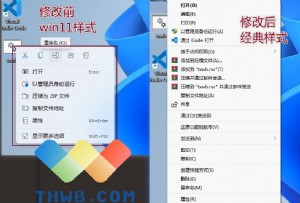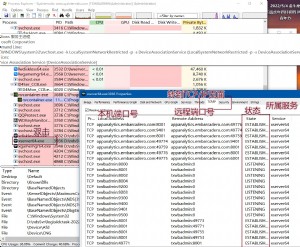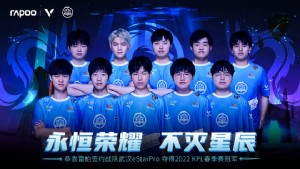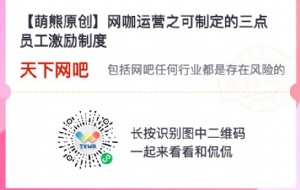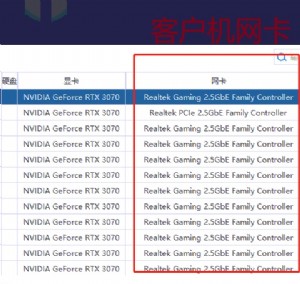NavigationView(BottomNavigationView)+Fragment防重新加载源码
很多老铁用BottomNavigationView+Fragment来实现主体APP的底部导航+页面渲染功能。老实说这个也是Google在Android Studio里推荐的用发。并且明显针对性的做了优化,所以你子啊使用BottomNavigationView+Fragment实现相关功能时你会感受到丝滑般的切换速度。
但是这个方案有一个致命的缺陷,就是每次切换后返回到上一个Fragment时都会重新加载页面,重新执行onCreateView和相关方法,数据和整个页面相当于刷新了一遍,这个对国内用户的习惯和体验来讲都是无法忍受的。所以才有了今天的这篇文章。
实现原理:
自己重写FragmentNavigator类,把核心的navigate方法重新实现,核心代码就是原版的暴力「ft.replace(mContainerId, frag);」这行替换成先判断目标Fragment是否已经存在,如果已经存在就直接返回旧的而不重建一个,不存在的才重建一个。
FixFragment类全代码如下 (核心方法为 navigate方法):
package util;
import android.content.Context;
import android.os.Bundle;
import android.util.Log;
import android.view.View;
import java.util.ArrayDeque;
import java.util.Map;
import androidx.annotation.IdRes;
import androidx.annotation.NonNull;
import androidx.annotation.Nullable;
import androidx.fragment.app.Fragment;
import androidx.fragment.app.FragmentManager;
import androidx.fragment.app.FragmentTransaction;
import androidx.navigation.NavDestination;
import androidx.navigation.NavOptions;
import androidx.navigation.Navigator;
import androidx.navigation.fragment.FragmentNavigator;
/**
* @ClassName FixFragmentNavigator
* @Description TODO
* @Author liqilin
* @Date 2021/6/24 15:38
* @Version 1.0
*/
@Navigator.Name("fixFragment")
public class FixFragmentNavigator extends FragmentNavigator {
private static final String TAG = "FixFragmentNavigator";
private static final String KEY_BACK_STACK_IDS = "androidx-nav-fragment:navigator:backStackIds";
private final Context mContext;
private final FragmentManager mFragmentManager;
private final int mContainerId;
private ArrayDeque<Integer> mBackStack = new ArrayDeque<>();
public FixFragmentNavigator(@NonNull Context context, @NonNull FragmentManager manager,
int containerId) {
super(context, manager, containerId);
mContext = context;
mFragmentManager = manager;
mContainerId = containerId;
}
/**
* {@inheritDoc}
* <p>
* This method should always call
* {@link FragmentTransaction#setPrimaryNavigationFragment(Fragment)}
* so that the Fragment associated with the new destination can be retrieved with
* {@link FragmentManager#getPrimaryNavigationFragment()}.
* <p>
* Note that the default implementation commits the new Fragment
* asynchronously, so the new Fragment is not instantly available
* after this call completes.
*/
@SuppressWarnings("deprecation") /* Using instantiateFragment for forward compatibility */
@Nullable
@Override
public NavDestination navigate(@NonNull FragmentNavigator.Destination destination, @Nullable Bundle args,
@Nullable NavOptions navOptions, @Nullable Navigator.Extras navigatorExtras) {
if (mFragmentManager.isStateSaved()) {
Log.i(TAG, "Ignoring navigate() call: FragmentManager has already"
+ " saved its state");
return null;
}
String className = destination.getClassName();
if (className.charAt(0) == '.') {
className = mContext.getPackageName() + className;
}
final FragmentTransaction ft = mFragmentManager.beginTransaction();
int enterAnim = navOptions != null ? navOptions.getEnterAnim() : -1;
int exitAnim = navOptions != null ? navOptions.getExitAnim() : -1;
int popEnterAnim = navOptions != null ? navOptions.getPopEnterAnim() : -1;
int popExitAnim = navOptions != null ? navOptions.getPopExitAnim() : -1;
if (enterAnim != -1 || exitAnim != -1 || popEnterAnim != -1 || popExitAnim != -1) {
enterAnim = enterAnim != -1 ? enterAnim : 0;
exitAnim = exitAnim != -1 ? exitAnim : 0;
popEnterAnim = popEnterAnim != -1 ? popEnterAnim : 0;
popExitAnim = popExitAnim != -1 ? popExitAnim : 0;
ft.setCustomAnimations(enterAnim, exitAnim, popEnterAnim, popExitAnim);
}
/**
* 1、先查询当前显示的fragment 不为空则将其hide
* 2、根据tag查询当前添加的fragment是否不为null,不为null则将其直接show
* 3、为null则通过instantiateFragment方法创建fragment实例
* 4、将创建的实例添加在事务中
*/
Fragment fragment = mFragmentManager.getPrimaryNavigationFragment();
if (fragment != null) {
ft.hide(fragment);
}
String tag = destination.getId() + "";
Fragment frag = mFragmentManager.findFragmentByTag(tag);
if (frag != null) {
ft.show(frag);
} else {
frag = instantiateFragment(mContext, mFragmentManager, className, args);
frag.setArguments(args);
ft.add(mContainerId, frag, tag);
}
ft.setPrimaryNavigationFragment(frag);
final @IdRes int destId = destination.getId();
final boolean initialNavigation = mBackStack.isEmpty();
// TODO Build first class singleTop behavior for fragments
final boolean isSingleTopReplacement = navOptions != null && !initialNavigation
&& navOptions.shouldLaunchSingleTop()
&& mBackStack.peekLast() == destId;
boolean isAdded;
if (initialNavigation) {
isAdded = true;
} else if (isSingleTopReplacement) {
// Single Top means we only want one instance on the back stack
if (mBackStack.size() > 1) {
// If the Fragment to be replaced is on the FragmentManager's
// back stack, a simple replace() isn't enough so we
// remove it from the back stack and put our replacement
// on the back stack in its place
mFragmentManager.popBackStack(
generateBackStackName(mBackStack.size(), mBackStack.peekLast()),
FragmentManager.POP_BACK_STACK_INCLUSIVE);
ft.addToBackStack(generateBackStackName(mBackStack.size(), destId));
}
isAdded = false;
} else {
ft.addToBackStack(generateBackStackName(mBackStack.size() + 1, destId));
isAdded = true;
}
if (navigatorExtras instanceof FragmentNavigator.Extras) {
FragmentNavigator.Extras extras = (FragmentNavigator.Extras) navigatorExtras;
for (Map.Entry<View, String> sharedElement : extras.getSharedElements().entrySet()) {
ft.addSharedElement(sharedElement.getKey(), sharedElement.getValue());
}
}
ft.setReorderingAllowed(true);
ft.commit();
// The commit succeeded, update our view of the world
if (isAdded) {
mBackStack.add(destId);
return destination;
} else {
return null;
}
}
@NonNull
private String generateBackStackName(int backStackIndex, int destId) {
return backStackIndex + "-" + destId;
}
}
做了这个工作后,还需要把对应的xml(通常为mobile_navigation.xml)里面的Fragment标签换成自己写的fixFragment。换完后整个.xml文件应该是类似下面的:
<?xml version="1.0" encoding="utf-8"?>
<navigation xmlns:android="http://schemas.android.com/apk/res/android"
xmlns:app="http://schemas.android.com/apk/res-auto"
xmlns:tools="http://schemas.android.com/tools"
android:id="@+id/mobile_navigation"
app:itemTextColor="@drawable/main_bottom_navigation"
app:itemIconTint="@drawable/main_bottom_navigation"
app:startDestination="@+id/navigation_home">
<fixFragment
android:id="@+id/navigation_home"
android:name="com.XXX.ui.home.HomeFragment"
android:label="@string/title_home"
tools:layout="@layout/fragment_home" />
<fixFragment
android:id="@+id/navigation_dashboard"
android:name="com.XXX.ui.dashboard.DashboardFragment"
android:label="@string/title_dashboard"
tools:layout="@layout/fragment_dashboard" />
<fixFragment
android:id="@+id/navigation_notifications"
android:name="com.XXX.ui.my.MyFragment"
android:label="@string/title_my"
tools:layout="@layout/fragment_my" />
</navigation>
然后去掉默认的关联,取消方法,activity_main.xml里取消
app:navGraph="@navigation/mobile_navigation"
最后,在.java里面把导航和你的Fragment手动关联起来:
NavController navController = Navigation.findNavController(this, R.id.nav_host_fragment_activity_user_info);
NavigationUI.setupActionBarWithNavController(this, navController, appBarConfiguration);
NavigationUI.setupWithNavController(navView, navController);
FragmentManager supportFragmentManager = getSupportFragmentManager();
NavHostFragment fragment =
(NavHostFragment)supportFragmentManager.findFragmentById(R.id.nav_host_fragment_activity_user_info) ;
Log.d("fragment.getId()",fragment.getId()+"");
FixFragmentNavigator fragmentNavigator =
new FixFragmentNavigator(this, supportFragmentManager, fragment.getId());
navController.getNavigatorProvider().addNavigator(fragmentNavigator);
navController.setGraph(R.navigation.mobile_navigation);




 天下网吧·网吧天下
天下网吧·网吧天下
